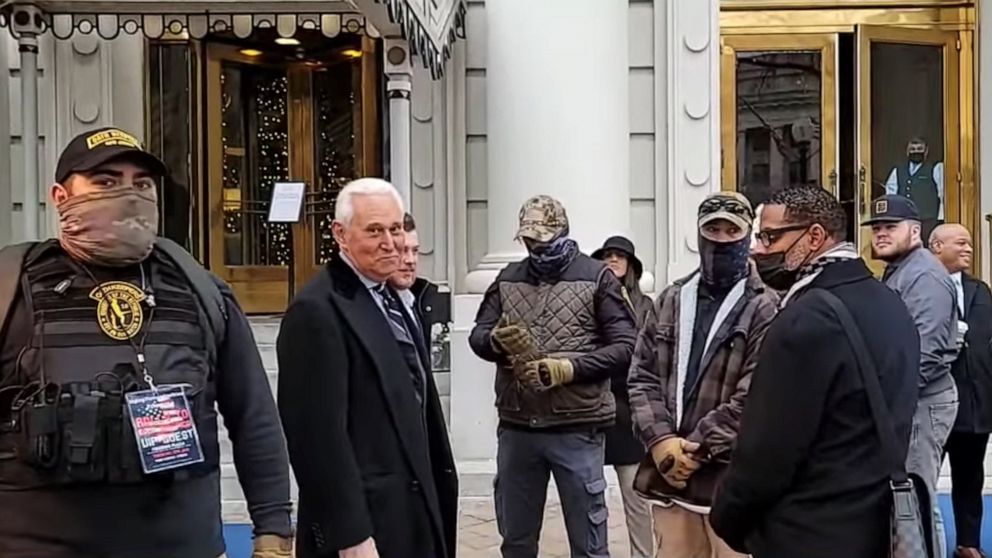One of the primary reasons that far-right groups like the Oath Keepers pose such a grave threat to American democracy is that they specifically recruit military and law-enforcement servicemembers and veterans into their organization—meaning that people who by training and nature are skilled at handling weapons and materiel, and are knowledgeable in engagement tactics, are being radicalized into their seditionist extremism, the kind we saw on display at the Jan. 6 insurrection.
New statistics demonstrate that the problem is growing sharply worse. A recently released study of the military background of violent right-wing extremists found that the number of identifiable domestic extremists with previous or ongoing affiliations in the armed forces has grown fourfold in the past decade, with a particularly steep increase since 2017.
Concern about the presence of extremist elements within the ranks of the military became acute after the insurrection, when it emerged that nearly one in five of the people indicted for their actions that day were either military veterans or currently active members. Defense Secretary Lloyd Austin promptly ordered an internal assessment of the extent of far-right influence within the armed forces, which he then followed up by ordering anti-extremist training for the troops, provoking the wrath of right-wing pundits and the same extremist groups (such as the Oath Keepers and Proud Boys) targeted by the orders.
Surveying data from between 1990 and November 2021, the new study—titled “Extremism in the Ranks and After,” produced by the National Consortium for the Study of Terrorism and Responses to Terrorism (START)—identified at least 458 people with military backgrounds who had been involved in criminal acts motivated by political, economic, social, or religious goals.
Prior to 2010, there were only about seven such criminal extremists per year identified in the database used by the researchers, the Profiles of Individual Radicalization in the United States (PIRUS). In the decade since, that average has jumped to 28.5 per year.
The study notes that the bulk of that increase is attributable to the sharp spike seen in recent years—particularly in 2017, 2020, and 2021. “Each of these years were marked by issues that mobilized comparatively large numbers of U.S. extremists,” the study noted.
The 2021 numbers were skewed by the unusually high numbers of federal defendants charged in the Jan. 6 attack on the U.S. Capitol. But even without those numbers, the study found and an average of 17.7 people a year since 2010 with military backgrounds included in the PIRUS database.
The study found that about 60% of the identified violent extremists had plotted acts of violence, but only about 35% of them were successful. Some 3.8% had engaged in spontaneous acts. Half of the crimes targeted the federal government, military, or law enforcement, while 30% of the identified extremists were unrepentant in their white supremacist, nationalist, and xenophobic views.
“These individuals were affiliated with no fewer than 50 extremist groups, including local skinhead gangs and several national white supremacist organizations,” the study said.
Not only was the problem of far-right infiltration into the ranks of the U.S. military a serious and mounting issue well before January 2021—with multiple documented examples of servicemen turning their military training into organizing neo-Nazi terrorism cells, for instance—but several of the arrests made in the Jan. 6 Capitol insurrection itself provide clear illustrations of its manifestation:
- One U.S. Army reservist charged in the Capitol siege, Timothy Hale-Cusanelli, was widely known among his colleagues at a New Jersey-based naval facility as a white supremacist, one who openly discussed his hatred of Jews in the workplace, according to federal prosecutors.
- Jacob Fracker, 29, was an infantry rifleman in the Marine Corps, according to the Pentagon, who deployed to Afghanistan twice, and served in the Virginia National Guard. He also was a police officer in Rocky Mount, Virginia—until he was fired for his participation in the insurrection.
- Air Force veteran Larry Rendall Brock Jr., was wearing a military-style helmet and tactical vest carrying flex cuffs aimed to “take hostages,” prosecutors claim. He posted on Facebook that he was preparing for a “Second Civil War,” and in the weeks after Joe Biden’s victory, Brock posted that “we are now under occupation by a hostile governing force.”
- Another insurrectionist arrested for invading the Capitol is a 35-year-old Marine veteran who once was crew chief of the presidential helicopter squadron at the White House named John Daniel Andries.
In all, the START study found 118 people (out of over 700 and counting) charged with Jan. 6 crimes with military backgrounds. Only 16% of them are still serving, and all but nine are men, the study found.
The Pentagon’s Inspector General announced last week that his office will be examining how effectively the military has screening for extremists during recruitment since early 2021. A December report from the IG’s office already noted that the Pentagon response to the issue is notably lacking in a commitment to gathering, tracking, and reporting data.
“Until the [Department of Defense] establishes DoD-wide policy for tracking and reporting allegations of prohibited activities, the DoD will continue to have inconsistent tracking of disciplinary actions for participation in extremist organizations and activities; problems identifying and collecting data from multiple, decentralized systems; and difficulty validating the accuracy of the data,” the IG wrote.
Democratic Congressman Anthony Brown of Maryland told the Federal News Network that he believes the Pentagon is moving in the right direction, but is still falling short, especially when it comes to data tracking.
“I don’t think it’s a step far enough,” Brown said. “I commend the department for better clarifying what prohibited activity is in terms of actively participating in extremist behavior. But I think it’s important that both Congress and the Pentagon take a clear position that membership with or without active participation in an extremist group would be grounds for disqualification for military service.”
